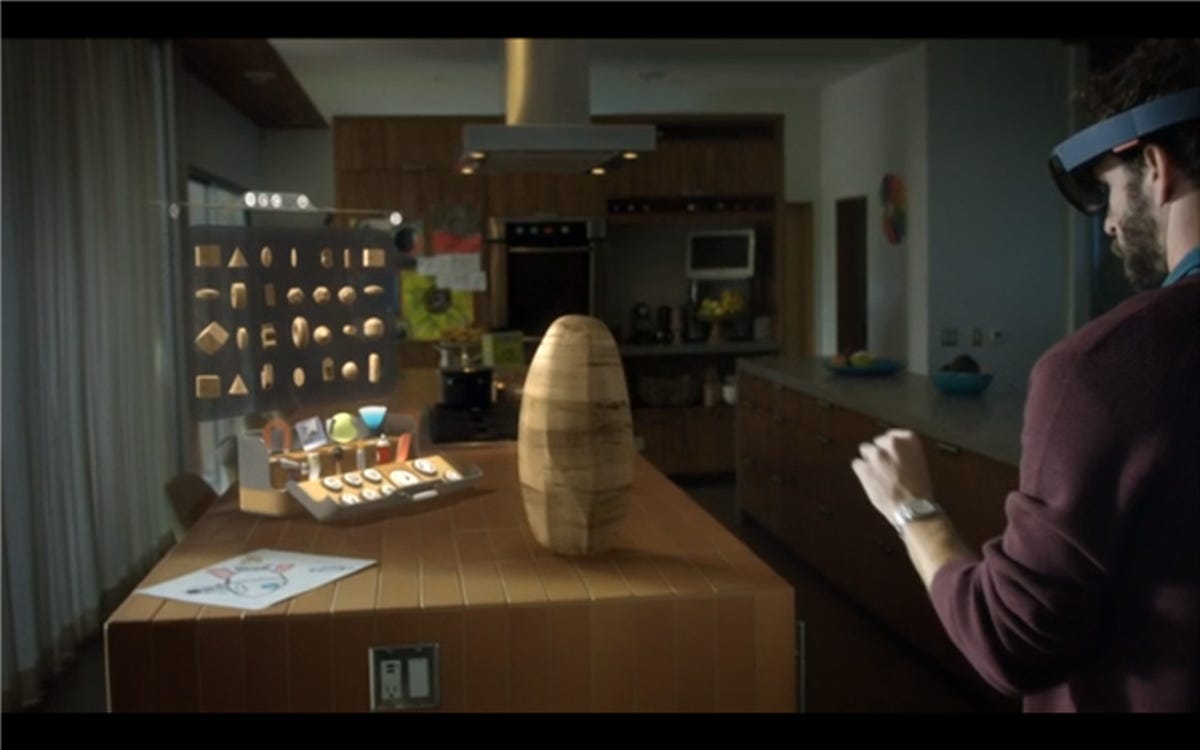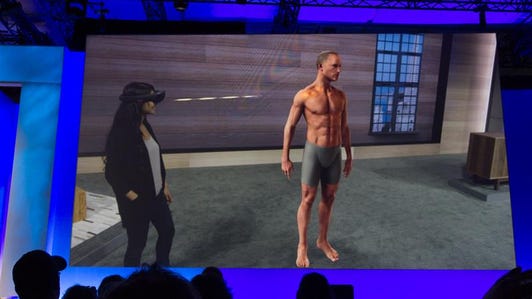
Screenshot by CNET
“This is your world with holograms.”
That’s how Microsoft’s Alex Kipman pitched the Microsoft HoloLens Wednesday during the company’s Windows 10 event: an event that ended up being about a lot more than PC operating systems. The HoloLens is a pair of goggles, but they create immersive, three-dimensional virtual worlds that blend with your own world.
The word hologram was mentioned a lot during the HoloLens unveiling. For developers, the app-developing tech is called Windows Holographic.
Check out what the Microsoft HoloLens can do (pictures)






But are these holograms? In a word, no. You can’t see them in the real world sense. They do not meet the “Help me, Obi-wan Kenobi” test, nor the dictionary definition of hologram. You can only see these “holograms” when you’re wearing the HoloLens glasses.
But there’s a name for what the pretty cool-sounding HoloLens can do: augmented reality. It’s a term that’s been around for years. HoloLens, and Windows Holographic, are just trying to perfect it. And maybe, put a marketing spin on the concept that will appeal better to real people.
The name “augmented reality” sounds about as comfy as a colonoscopy. Virtual reality is already far-flung to many. Augmented reality (AR) is simply the idea of blending those types of virtual objects and worlds with our own, overlaying them. AR is VR plus real life.


Screenshot by CNET
“We’re not talking about putting you into virtual worlds,” Kipman said. But he is. Microsoft is. The worlds created by the HoloLens can be equally immersive: 3D versions of Minecraft extending through your wall, expeditions to Mars, or games bleeding onto your coffee table. So, why the holography talk? Because, I expect, it sounds more immediate. It sounds like something we might be familiar with. People have seen holograms. People haven’t tried AR.
There’s also a turf war brewing: not just in VR, but in AR too. Oculus has dominated the virtual reality space, but augmented reality is an open field. Google Glass dabbled in it. Outliers like Epson’s Moverio Smart Glasses have explored it, too. Companies like Magic Leap are readying possibly jaw-dropping new efforts. Could Google be readying its own killer augmented-reality demos at its 2015 Google I/O developer conference? I’d say it has to: in fact, last year, there were already a few examples, including an augmented-reality aquarium experience that used Google’s Project Tango depth-sensing tablet and a pair of goggles.
The land grab isn’t just for technologies and platforms, but for creative talent and app development. Kipman invited app developers to explore HoloLens and Windows Holographic: “Want to create a Holographic app? Easy. Developers: Windows 10 is yours.”
Apps and developers are the key. They’re what’s been hurting Windows versus Android and iOS. And resources are limited; new technologies vary greatly. Even in VR, there isn’t a common developing language yet. Will developers make the leap to HoloLens and Windows Holographic? Who knows? But Microsoft is hoping for it. Kipman extended the invite: “Oculus, Magic Leap, Glass developers and everyone else, we humbly invite you. Come create holograms with us.”
“Hologram” could be an attempt at grabbing a familiar icon and branding it, making it familiar to both everyday people and developers alike. The HoloLens isn’t about holograms…but in the end, that might be the best way to describe what it feels like. Maybe that’s a pretty smart move by Microsoft. And a necessary one, considering what might come next.



